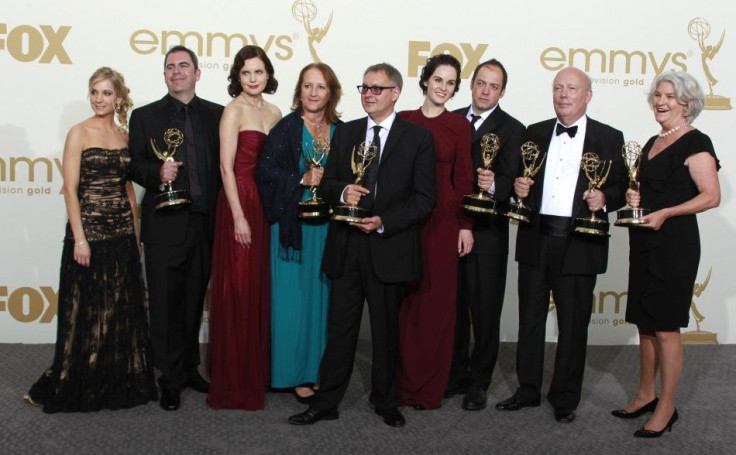Is 'Downton Abbey' Changing The Face Of Network Television?

More than 8 million people tuned in to the third-season finale of PBS’ British drama “Downton Abbey” last Sunday. The same night, 11 million people watched AMC’s zombie thriller “The Walking Dead.” Despite being on public television and cable TV, these two shows drew more viewers than just about anything on broadcast TV. Is this a sign that the television landscape is changing?
In the case of “Downton Abbey's” third season overall, it was the most-watched series for PBS since Ken Burns’ 1990 documentary series “The Civil War,” according to Nielsen figures reported by the Associated Press.
In all, 8.2 million viewers tuned in for the season finale of “Downton Abbey.” It is an extremely large number for any TV outlet, but it is much more surprising when it is amassed by a publicly funded network like PBS.
On Sunday night, nothing that ABC, Fox, or NBC aired were able to top “Downton Abbey’s” figure. Only three shows on CBS -- “60 Minutes,” “The Mentalist,” and “The Amazing Race” -- drew more, with roughly 9 million viewers each. Surprisingly, though, even CBS couldn’t compete with AMC’s “The Walking Dead,” which had 11.1 million viewers, according to Nielson ratings.
In recent years, “Downton Abbey” and “The Walking Dead” have attracted more viewers than the average prime-time network show. Typically, a prime-time program on CBS will draw 8.8 million viewers, while shows on other networks such as ABC and Fox will be watched by about 6 million. NBC has averaged only 4.4 million per prime-time show.
So what does this mean for the future of television?
For starters, more and more viewers are turning to networks outside the traditional big four broadcast networks of ABC, CBS, Fox, and NBC. Because cable shows tend to take more risks and offer more layered and nuanced storytelling, they give viewers something that network television doesn’t: a meaningful attachment to characters and a long-running story with serious payoffs.
Just look at the increased viewership for serialized dramas over the past few years. While broader comedies like “The Big Bang Theory” still dominate in the ratings, quiet dramas such as “Mad Men” have been steadily increasing in viewership and shows such as “The Walking Dead” have become ratings giants. If this trend continues over the next few years, it could mean this big shift in the way television is consumed could have previously unthinkable consequences.
And the future gets even murkier when you consider the rise of online-only series such the Netflix original “House of Cards.” According to TechCrunch, about 10 percent of Netflix’s reported 33 million subscribers have streamed “House of Cards.” Those 3.3 million viewers aren’t exactly CBS numbers, but considering that “House of Cards” is only Netflix’s second original series, the market is likely to grow in the future. Netflix is set to launch a revival of the cult-classic comedy "Arrested Development" in May, giving it another chance to boost viewers of its original programming.
Ultimately, as shows such as "Downton Abbey," "The Walking Dead," and "House of Cards" become more popular, they stand to change the way that consumers seek out and consume television and televisionlike programs. With cable shows becoming more popular and digital distribution on the rise, we could be on the verge of a complete revolution in serialized programming.
© Copyright IBTimes 2024. All rights reserved.












